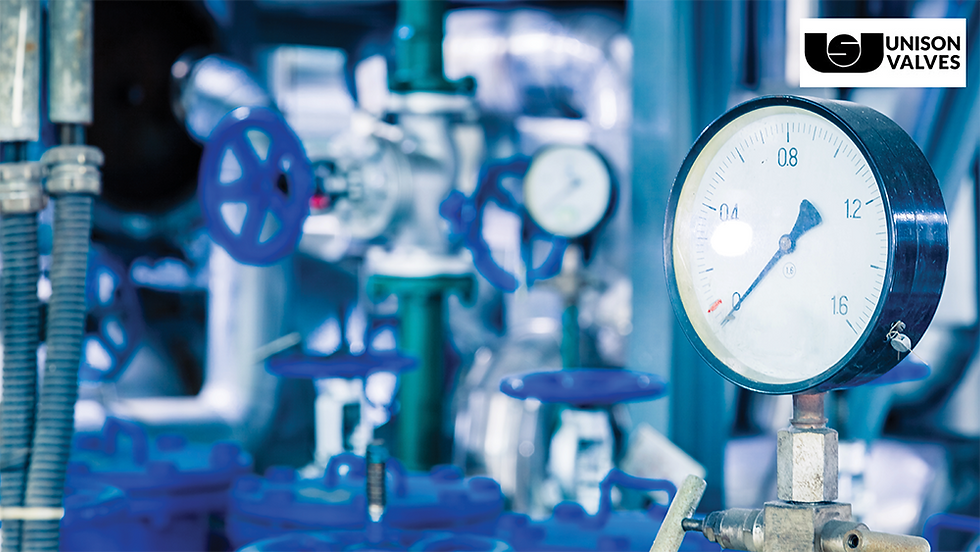Understanding Valve Automation: Types, Applications, and Implementation
- Sai Kapil Reddy
- Sep 13, 2024
- 4 min read

Valve automation has become an integral part of modern industrial processes, enhancing efficiency, safety, and control. By automating valves, businesses can optimize operations, reduce manual labor, and improve overall productivity. This comprehensive guide will delve into the key aspects of valve automation, providing insights into different types of actuators, control systems, and best practices for implementation.
Types of Valve Actuators and Related Accessories
Pneumatic Actuators: Utilize compressed air to operate valves. They are reliable, cost-effective, and widely used in various industries. Actuators can be either single acting or double acting. They are selected based on air pressure available at the site. Pneumatic actuators will need a mechanism, like solenoid valves, to control air flow into and out of them.
Electric Actuators: Employ electric motors to drive valve movement. They offer precise control, energy efficiency, and easy integration with automation systems. Electric actuators typically come built in with feedback control and manual overrides. They can be modulating type or ON / OFF type. Electric actuators operate slower than pneumatic actuators, for instance, they take upto 30 seconds to open or close the valve, whereas, pneumatic actuators will take just a few seconds depending on size of the valve.
Hydraulic Actuators: Utilize hydraulic pressure to operate valves. They are suitable for high-force applications but require a hydraulic power supply. These actuators are not common and are generally used for large sizes that have a very high operating torque. Similar to electric actuators, their operation is slow.
Solenoid Actuators: Use electromagnets to directly actuate valves. They are compact, fast-acting, and suitable for low-force applications. Solenoid Valves are typically used in conjunction with Pneumatic Actuators or Hydraulic Actuators. Solenoid valves come in various types. They may be 3/2 (used with single acting actuators) or 5/2 (used with double acting actuators). Additionally, their selection depends on the number of coils required, power input, enclosure rating etc.
Gear Boxes: Gear boxes attached with a handwheel are used to reduce the operating torque of valves. Gear boxes fitting with a clutch are used as Manual Overrides for actuated valves.
Position Indicators or Limit Switch Boxes: Position Indicators a.k.a. Limit Switch Boxes are used to provide information of the open, closed, or partially open state of a valve to the control system. They are used in conjunction with Pneumatic or Hydraulic Actuators. They come in various types depending on the type of switch required, ON / OFF or modulating type (can be used for position control), type of enclosure etc.
Air Filter Regulators: As the name suggests, these are used to filter the air and control its pressure before it enters a pneumatic actuator. Impurities in the air can damage seals, reducing the life of the actuator. Additionally, if your plant stores and delivers air at higher pressures than the actuator is designed for, it is important to reduce this air pressure with a regulator before it enters the actuator.
Valve Automation Systems
Distributed Control System (DCS): A centralized system that controls multiple processes and equipment, including valves. DCSs offer advanced features like data logging, alarm management, and remote monitoring.
Programmable Logic Controller (PLC): A flexible automation device that can control valves and other equipment based on programmed logic. PLCs are often used in smaller-scale applications.
Standalone Controllers: Dedicated controllers designed specifically for valve automation. They provide localized control and can be integrated with larger automation systems.
Benefits of Valve Automation
Improved Efficiency: Automated valves can optimize processes, reduce downtime, and enhance productivity.
Enhanced Safety: Automated systems can minimize human error and improve safety by preventing accidents and leaks.
Improved Control: Valve automation enables precise control over fluid flow, ensuring optimal system performance.
Reduced Costs: Automation can lead to cost savings by reducing manual labor, energy consumption, and maintenance requirements.
Data-Driven Insights: Automated systems can collect valuable data that can be used for analysis, optimization, and predictive maintenance.
Implementing Valve Automation
Needs Assessment: Identify the specific requirements and objectives of your valve automation project.
Actuator Selection: Choose the appropriate actuator type based on factors like force requirements, operating environment, and control needs.
Control System Selection: Select the most suitable control system (DCS, PLC, or standalone controller) for your application.
Integration and Commissioning: Integrate the valves and actuators with the control system and commission the automated system.
Training and Maintenance: Provide training to operators and maintenance personnel, and establish a regular maintenance schedule.
Challenges and Considerations
Cost: Implementing valve automation can involve initial costs for hardware, software, and installation.
Complexity: Complex automation systems may require specialized expertise for design, implementation, and maintenance.
Reliability: Ensure the reliability of the automation system to avoid disruptions and downtime.
Cybersecurity: Protect the automation system from cyber threats to prevent unauthorized access and control.
Conclusion
By understanding the key aspects of valve automation and addressing potential challenges, businesses can leverage this technology to improve efficiency, safety, and productivity. Unison Valves offers comprehensive valve automation solutions tailored to your specific needs. Contact us today to discuss your project and explore how our expertise can help you achieve your goals.
Image Credits: Yandex



Comments